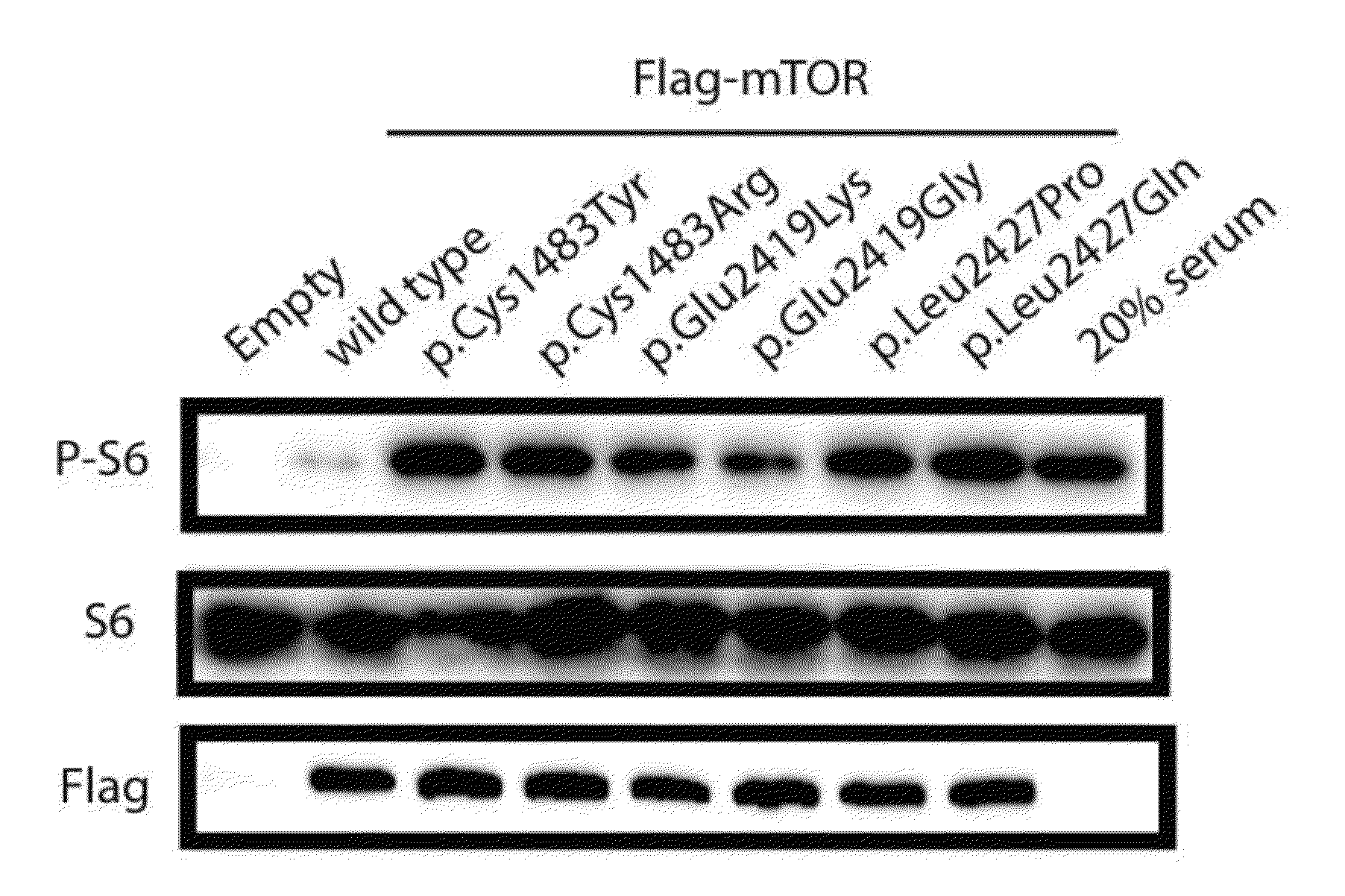Brain somatic mutations associated to epilepsy and uses thereof
a brain somatic mutation and epilepsy technology, applied in the field of epilepsy-inducing brain somatic mutations, can solve the problems of insufficient understanding of the etiology and pathogenetic mechanisms of epilepsy
- Summary
- Abstract
- Description
- Claims
- Application Information
AI Technical Summary
Benefits of technology
Problems solved by technology
Method used
Image
Examples
example 1
Identification of Brain Somatic Mutations I
[0114]1.1. Sample of Epilepsy Patient
[0115]Blood (about 5 ml) and brain tissue (about 1-2 g) were obtained with consent from 6 patients after surgery for intractable epilepsy due to malformations of cortical development (Pediatric Neurosurgery, Severance Hospital). 6 patients with malformations of cortical development were composed of 4 patients with focal cortical dysplasia (FCD), 1 patient with hemimegalencephaly (HME) and 1 patient with Tuberous sclerosis complex (TSC) 1 (FIG. 1 and FIG. 2).
[0116]1.2. Whole Exome Sequencing
[0117]Genomic DNAs were isolated from the blood and brain tissue samples of 6 patients using a Qiamp mini kit (Qiagen). Then, exome enrichment was carried out using a sure select target enrichment system (Agilent). For more accurate analysis of gene mutations in genomic DNAs of the blood and brain tissue samples of the patients using Hiseq2000 (Illumina), whole exome sequencing with ˜500× coverage on average, which is ...
example 2
Identification of Brain Somatic Mutations II
[0125]2.1. Sample of Epilepsy Patient
[0126]Saliva (about 1 ml) and formalin-fixed, paraffin-embedded brain tissue were obtained with consent from 76 patients after surgery for intractable epilepsy due to malformations of cortical development (Pediatric Neurosurgery and Pediatric Neurology, Severance Hospital). Of 76 patients, 51 patients were diagnosed with focal cortical dysplasia type IIa (FCDIIa) and 25 patients were diagnosed with focal cortical dysplasia type IIb (FCDIIb).
[0127]2.2. Targeted Re-Sequencing
[0128]Genomic DNAs were isolated from the saliva and formalin-fixed, paraffin-embedded brain tissue samples of 76 patients prepared in Example 2.1 using a Qiamp mini DNA kit (Qiagen) and a prepIT-L2P purification kit (DNAgenotek). Then, two pairs of primers having two targets were prepared so that they contained the mTOR targeted codon region (containing amino acids, Cys1483, Glu2419, and Leu2427).
TABLE 2SEQTargetIDregionprimerNO.Chr1...
example 3
Induction of Intractable Epilepsy Using mTOR Mutated Gene
[0138]3.1 Induction of mTOR Mutation and Preparation of mTOR Mutant Construct
[0139]pcDNA3.1 flag-tagged wild-type mTOR construct was provided by Dr. Kun-Liang Guan at the University of California, San Diego. The construct was used together with a QuikChange II site-directed mutagenesis kit (200523, Stratagene, USA) to prepare mTOR mutant vectors (C1483R, E2419G, L2427Q, C1483Y, E2419K and L2427P).
[0140]To prepare a pCIG-mTOR mutant-IRES-EGFP vector, MfeI and MluI restriction enzyme sites were first inserted into pCIG2 (CAG promoter-MCS-IRES-EGFP) using the following annealing primers [forward primer 5′-AATTCCAATTGCCCGGGCTTAAGATCGATACGCGTA-3′ (SEQ ID NO. 19) and reverse primer 5′-ccggtacgcgtatcgatcttaagcccgggcaattgg-3′ (SEQ ID NO. 20)) so as to prepare pCIG-C1. Subcloning of the newly inserted MfeI and MluI restriction enzyme sites was carried out using the following primers [hmTOR-MfeI-flag-F; gATcACAATTGTGGCCACCATGGACTACAAGGA...
PUM
| Property | Measurement | Unit |
|---|---|---|
| composition | aaaaa | aaaaa |
| resonance | aaaaa | aaaaa |
| length | aaaaa | aaaaa |
Abstract
Description
Claims
Application Information
 Login to View More
Login to View More - R&D
- Intellectual Property
- Life Sciences
- Materials
- Tech Scout
- Unparalleled Data Quality
- Higher Quality Content
- 60% Fewer Hallucinations
Browse by: Latest US Patents, China's latest patents, Technical Efficacy Thesaurus, Application Domain, Technology Topic, Popular Technical Reports.
© 2025 PatSnap. All rights reserved.Legal|Privacy policy|Modern Slavery Act Transparency Statement|Sitemap|About US| Contact US: help@patsnap.com



